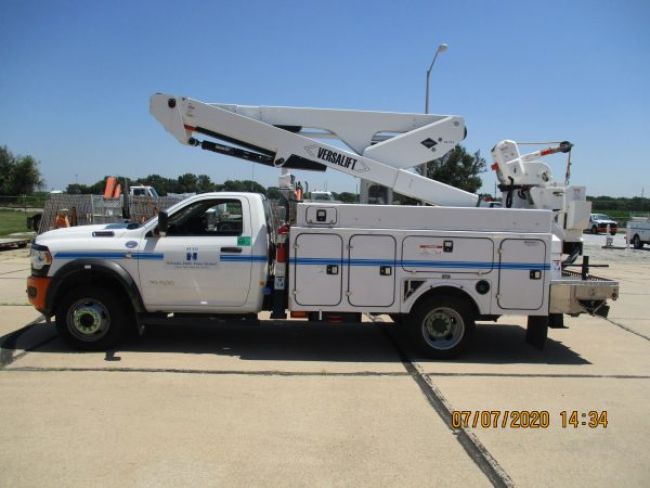
10-Point Checklist for Spec’ing Strobe Lights for Utility Fleet Applications
Most vehicles in a utility fleet have strobe lights to protect workers and the public from a collision with a stationary vehicle. But with numerous strobe options to consider, how do you evaluate what will work best for your fleet?
UFP spoke with Nebraska Public Power District’s fleet superintendent, Rob Barbur, and fleet supervisor, TK Rayburn Jr., to get their advice. They shared these 10 points.
1. Configuration
How do you determine the optimal configuration for installing strobe lights?
It depends on the vehicle type. NPPD, for example, specs different strobe packages for pickups, SUVs, medium-duty trucks, aerial devices, digger derricks, crane trucks and off-road equipment. The primary difference in the packages is where the strobes are mounted on the vehicle.
“On a light-duty pickup, for instance, we mount four strobes on the back rack behind the cab and two strobes in the factory grille,” Barbur said. “But those same locations would not be available with a digger derrick or an aerial device. So, we may have to put the strobes in a poly box or mount them into the truck’s structure, like in the tailshelf.”
2. Vehicle
How do you decide which vehicles get strobes?
“It depends on their usage,” Rayburn said. “Almost everything we have will get strobes unless used for an office application or as a people hauler. But even in those applications, we would consider putting strobes on it if the vehicle might be used during emergencies.”
3. Environment
In what type of environment will the vehicles and equipment be used?
“If the vehicle operates in a brushy area with many tree branches and things of that nature, you should consider how you will guard the strobes, or they’ll get broken. You can purchase brush guards with strobes from the manufacturer,” Rayburn said.
4. Intensity
Strobes come in three classes. So, what’s the difference between the classes?
The difference is based on the strobes’ brightness and intensity. “Class 1 is primarily reserved for emergency and some utility vehicles. Class 2 is primarily for utility-type vehicles. And then Class 3 is more for, perhaps, a state truck picking up trash on the side of the road,” Barbur said.
5. Pattern
You can select the flash pattern you want on most strobes. But what pattern should you choose?
Barbur said that NPPD runs a random flash pattern. “One of the reasons for that is that it breaks up the monotony of a triple flash or quad flash. The unexpected flash keeps people alert to avoid a collision.”
6. Color
What are the considerations for selecting the strobe color?
“We run all amber lights,” Barbur said. “Your reds, blues and whites are reserved for emergency vehicles. But you will want to check your local statute for what you can run.”
7. Visibility
Are the lights visible from all sides of the vehicle?
“Visibility is critical,” Rayburn said. “The purpose of strobe lights is to protect the end user and the public. So, if you can’t see them, they’re not doing their job.”
But ensure the light is not where the operator will be blinded by it at night. “This is why we also have blackouts on the top of the rack-mounted strobes above the cab on our aerials – to protect the operator in the bucket,” Rayburn said.
What is a “blackout”?
“It’s a cover that goes over the strobe so the light does not shine up when the aerial device is in operation. The light only flashes out,” he said.
8. Size
Will the light fit where you want it?
“There are times we’d like to have that 6-inch oval light, but there’s not enough real estate on the truck to mount it. So, we have to adjust a little bit and go with a 4-inch round light,” Barbur said.
9. Availability
What components are available, especially when there’s still a semiconductor supply shortage?
“Right now, the decision between Class 1 and Class 2 strobes is really based on availability,” Barbur said. “If we can get the Class 1’s, we will get it. It’s generally what we do. But you take what you can get right now.”
10. Vendor
What should you look for in a strobe vendor?
“Find a vendor that deals with a strobe manufacturer that has been around for at least five to 10 years,” Barbur said. “If you’ve been to any trade shows, you’ll see many manufacturers, but you’ll rarely see the same ones twice. So, I would stick with a reputable manufacturer and distributor that’s been in the business and been around.”

